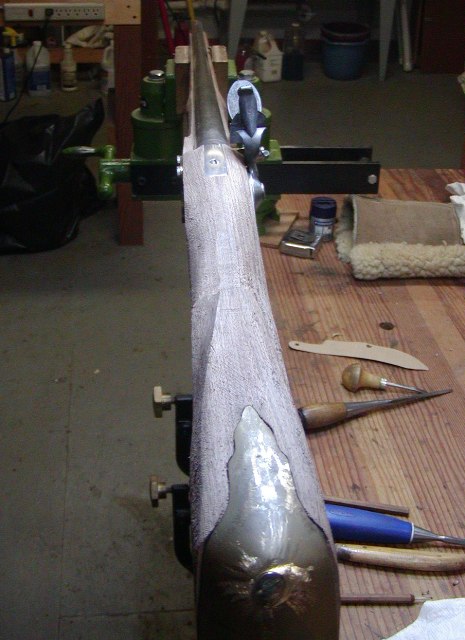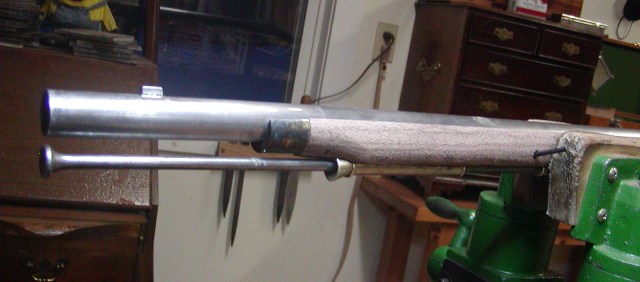Hoo Boy Howdy!!! There's a Bess in there!!
She's still pregnant and a lot of wood has to go to deliver this baby but its coming along nicely. For you you Bess aficionados, you might not have noticed the butt plate has no lug under the forward extension for a cross pin. That is because the butt plate I am using is a copy from a marine and militia musket, which is the same as those on the pattern 1769 short land muskets minus the lug. It is really not needed but I will install a cross pin in the stock for cosmetic appearance. This black walnut is not as good as I originally thought. It is very splintery and I have to really be careful with my tools. When finish is applied, it will be fine but I do wish it was English walnut. I am not going to use the Miroku trigger guard because the forward lug for the swivel is way too small and not authentic. I ordered a different guard, which should also have extra thick brass like the Dublin Castle muskets.
Nick, I use a Grizzly 15" band saw with roller guides. It is very powerful and the large throat really helps.
Gus and Nick, book alert! I am reading "Noble Volunteers" by Don Hagist. He is the managing editor for the Journal of the American Revolution (
www.allthingsliberty.com). It is an in depth study of life as a British soldier during the Rev War. It really up ends a lot of myths and is well worth having in your libraries. Gus, you will appreciate that Cuthbertson was a writer of military guides but none of those guides or any other "guides for the young soldier" were official products. They were just the author's opinions and did not necessarily influence British soldiers very much. Hagist includes tables written at the time showing the heights of soldiers in regiments and you can clearly see how the tall guys went to the grenadiers and the shorter nimble guys went to the light companies. It is also interesting that recruiters were encouraged to only accept men >5' 7" tall. Moreover, they were not the "scum of the earth" that Wellesley called them but a real cross section of trades, laborers, and even professional people. The most common motivation to join was that they simply wanted to be soldiers.
dave









